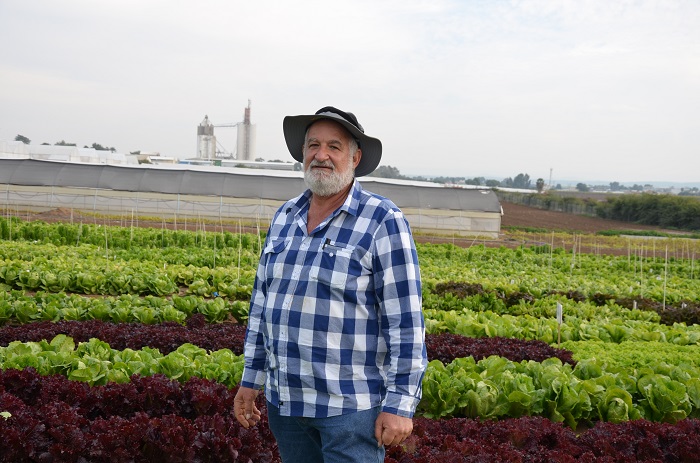At the Hazera open day for lettuce growers held on the Berurim farm in mid-December 2015, Hazera Lettuce Breeder, Amos Nir, gave a talk on the causes of Lettuce Tip Burn and offered some solutions for both field and hydroponic varieties.
Writer: Nurit Levy- www.israelagri.com
Tip Burn in Field Grown Lettuce
Necrosis found at the edges of lettuce leaves results in a considerable loss of income to the grower. Amos argues against the accepted explanation for this problem – a shortage of calcium. He believes that an imbalance in the slow growth rate of the roots compared to the foliage’s rapid growth is the probable cause. Evaporation through the plant vessels enables water and fertilizers to climb up within the plant, despite gravitation.
At the apexes of plants, embryonic cells differentiate into the plant’s various tissues. It is here at the apexes where a deficient supply of water and minerals will be manifested in necrosis of cells – the caus
Why during Spring time, when there is no shortage of minerals in the soil, Lettuce Tip Burn presents much more than at other seasons of the year? The explanation for this phenomena is due to the rapid transition from moderate winter temperatures to the scorching summer heat. The small root system, which supported the foliage during the cold winter, is unable to supply sufficient nutrients to the rapid developing plant foliage.
Hydroponics and Tip Burn
The advantages of growing lettuce using hydroponics:
- A fast cycle;
- Saves water and fertilizer;
- Large markets
- Small plants;
- Net covering (meets the demands of the ultra-orthodox Jewish community);
- The facility can be positioned near the customers – saves freight costs;
- Work is possible in all weather conditions.
Disadvantages:
- The cost of the initial investment;
- Considerable energy costs;
- Heat exchange between water and air;
- Tip Burn is present in all seasons.
In seeking the reason for this necrosis, Amos analyzed the data he received from the Israeli Meteorological Service over six years. The finding of this analysis reveals that Temperatures at 30 cm soil depth are higher than the temperatures at 2 m’ in the air by 3°C in mid-winter and by 8°C during mid-summer.
Since in hydroponics there is no temperature difference between air and water, and as we note from the analysis mentioned above – there is a need for more heat within the root system over the temperature at the foliage level. Lettuce Tip Burn will be sure to be present all year round, if we cannot mimic the conditions found during the seasons when tip burn is not a problem in the field.
What can be done:
In the field: prior to a heat wave – reduce irrigation to enhance root system development and during high temperatures – irrigate at full capacity.
Hydroponics: 1. Use slow growing varieties. 2. Use varieties with relatively large root systems.






